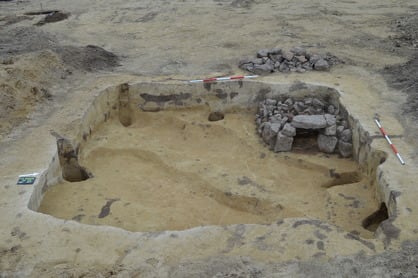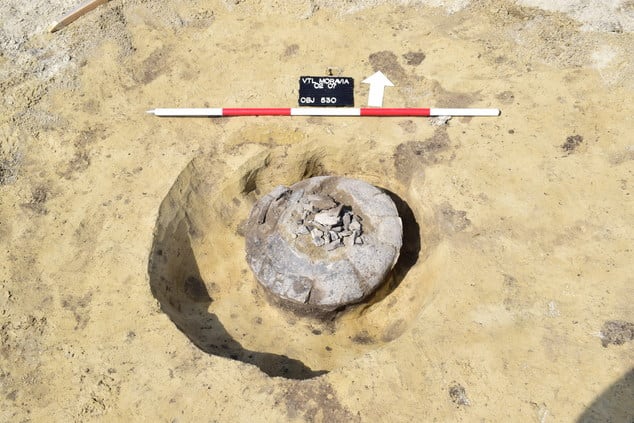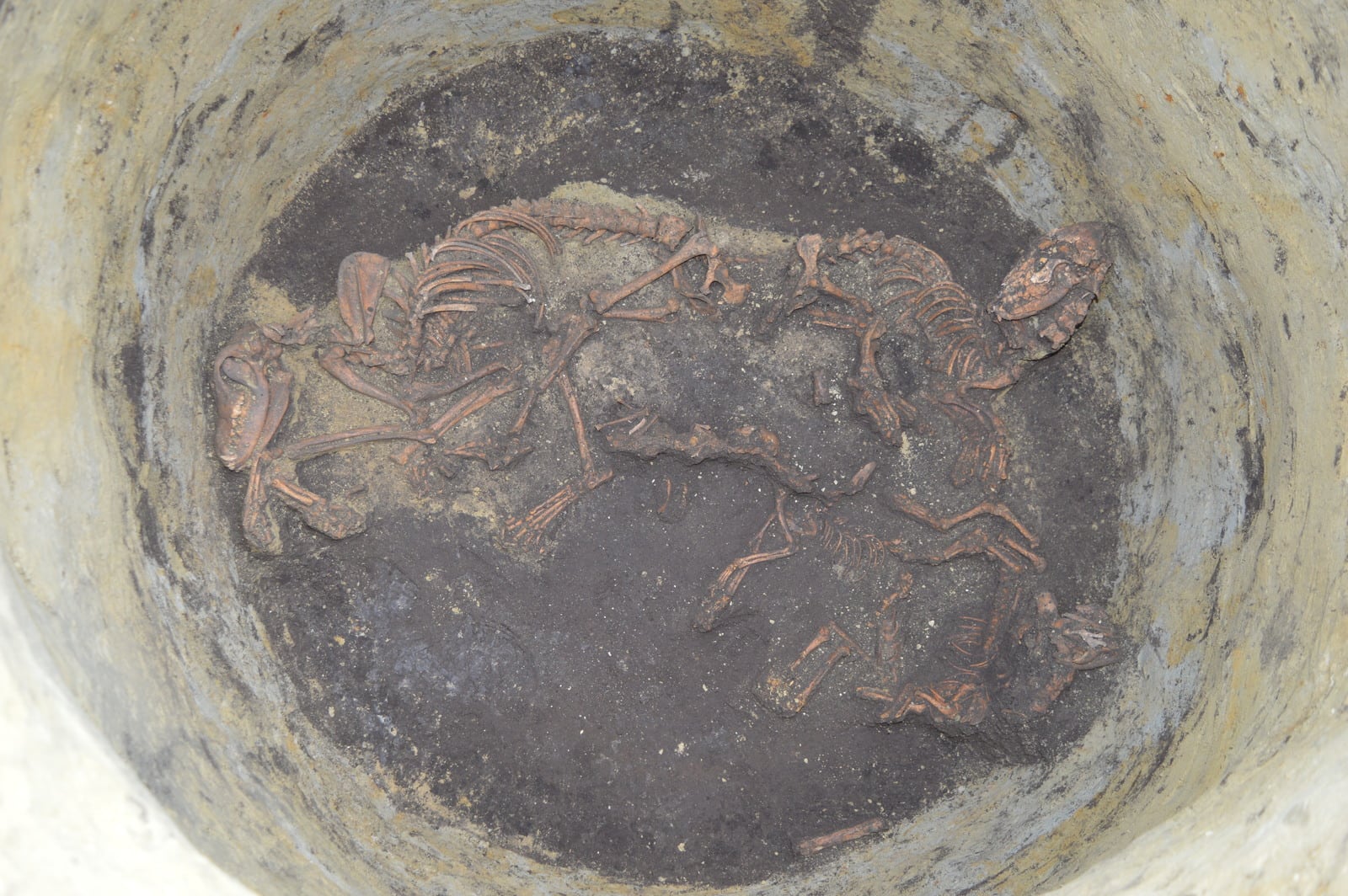Jen pro upřesnění ta kniha se nejmenuje "hřbitov zvířátek" ale Řbitov zviřátek..... V tom je právě ta pointa......
"Cemetery" of animals near Mutěnice in Hodonín region
Categories: Castles, strongholds and extinct places , Finds and rescue research in the Czech Republic
Scenes from the horror novel The Cemetery of the Animals are reminiscent of the find from Mutěnice in the Hodonín region. Archaeologists discovered the remains of dogs and puppies there. The pits are located away from the village.
Archaeological research began in early March. It is related to the construction of the new Moravia gas pipeline. Therefore, archaeologists are carrying out rescue research at selected sites so as not to block the construction later. The Institute of Archaeological Heritage Protection in Brno is dealing with the site between Mutěnice near Hodonín and Jestřabice near Kyjov.
The Mutěnice Meadow site has so far produced the most interesting discoveries. Archaeologists have uncovered part of a Great Moravian village there. They discovered the remains of dwellings, but also animal skeletons.
"The village was situated on both sides of the now nameless left tributary of the Mutěnický Brook. Its centre consisted of smaller houses of square or rectangular plan with the floor partly filled in"The archaeologist Michal Přichystal reveals that the floor of the building was usually fitted with a stone heating system in one of the corners.
The local settlement included buried buildings that were used for farming or production. These were, for example, storage pits or clay ovens with stone-lined bottoms. The most interesting finds are reminiscent of the aforementioned horror novel by Stephen King.
Archaeologists have discovered various skeletons in two deep pits. "In the backfill of the first one, a human skeleton was discovered in a non-five position, with a whole dog skeleton still resting on top. The second burial pit then contained the remains of several adult dogs and puppies, under which lay a complete skeleton of a goose," said Přichystal.
Similar pits with animal remains have been found elsewhere in Moravia. Archaeologists have also discovered a site in the Hodonín region that served as a burial site for members of the bell-shaped cup culture as early as the Late Stone Age.
"Despite the torso-like preservation of most of the skeletal remains due to the unfavourableconditions, it was possible to discern that the dead were deposited in a hunched position differentarchaeologist Ivan Čižmář said, adding that the dead were buried with ceramic vessels such as cups or jugs. Some of them may have contained food charity, but they have already decomposed, according to archaeologists.
A hundred metres further on, the researchers found a settlement of the bearers of the Velatic phase of the Central Danube ash-field culture from the Younger Bronze Age. There were shallow pits with broken pottery.
Sources: www.uapp.cz, www.ceskatelevize.cz
The article is included in categories:










